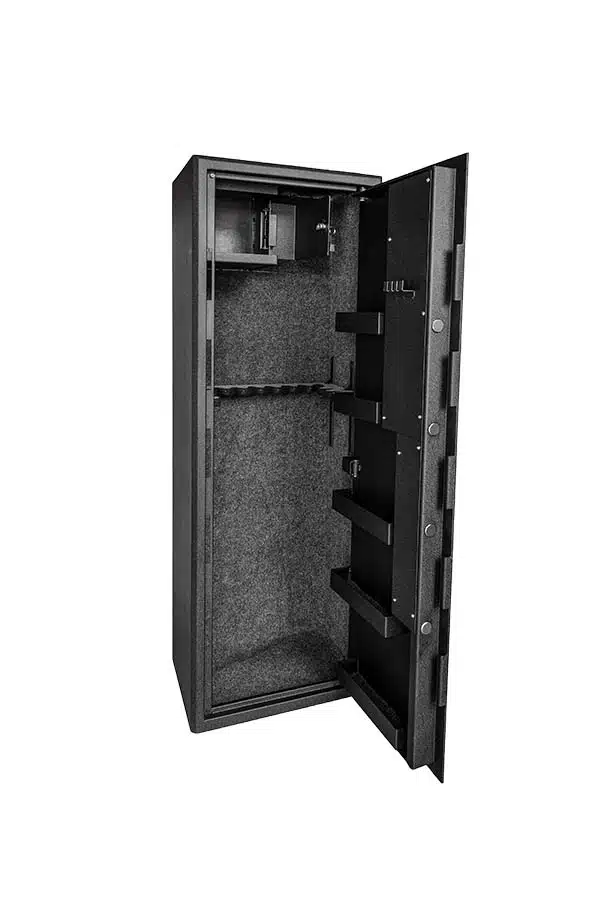At first glance, making sure a gun safe is airtight might seem like it gives the best protection against water seeping in. However, the opposite is actually true. Gun safes aren’t airtight because this could lock in moisture that damages firearms. It’s also difficult to make a safe airtight, since there are holes around the seam of the door, and you’ll often see a hole in the top of the safe that was created as part of the manufacturing process. While your gun safe may have holes to prevent moisture from settling on your firearm, you’ll still want to take a few steps to further reduce the effects of humidity on your gun. The firearms safety and training experts from Gun Safety Training Pros, your premier choice when you’re ready to take a firearms safety class, explain.
Know the Proper Humidity Level for Guns
Although your gun safe might not be airtight, you should still try to maintain a proper humidity level to protect your firearm from rust and corrosion. Ideally, the humidity level should be kept around 50 percent. Depending on the conditions in your environment, you may need to use methods other than simply putting your gun in the safe to maintain that humidity level.
Add a Hygrometer to the Safe
A hygrometer is a device you can place inside the safe to measure the current humidity evel. Most hygrometers also show the temperature, which can be helpful for determining why there might be more moisture in the air than you prefer. After placing a hygrometer in the safe, make sure to check it regularly. You’ll especially want to check it during seasonal changes or any time the inside of your house or storage area has a major temperature change. For example, you might need to check it if you turn your home’s AC off during the winter.
Use a Dry Rod Dehumidifier
If you live in a humid climate, you may need to use a dehumidifier to remove moisture from the air. A dry rod, or golden rod, heats up the air inside the safe so less moisture remains. These rods are easy to place inside gun safes, and they run off electricity. Most gun safes already have holes drilled for dry rod cords, but you might need to drill one yourself if you have an older unit, or you may prefer to use a cordless model. Keep in mind you’ll want to monitor the humidity level in the safe after you begin using the dry rod.
Remove Moisture with Desiccant
If you’ve ever seen the little packets that come inside shoeboxes, you’ve already worked with desiccant. These moisture-absorbing granules are usually placed in larger cans for gun safes, and they’re effective for keeping humidity levels low. The most common types simply need to be recharged by heating them in the oven to make the granules dry out so you can use them again.
Responsible gun owners understand their number one priority is safety, which includes storing firearms properly and getting the right training to use their guns safely. If you’d like to learn more about gun safety from experienced professionals by taking a high-quality online gun safety course, reach out to the experts at Gun Safety Training Pros. Contact us today at [email protected].



